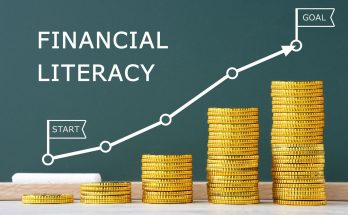Investing can feel like a maze, especially for new investors. With so many options available, it’s easy to get overwhelmed. One investment type that often flies under the radar is bonds. They may not be as flashy as stocks or cryptocurrencies, but bonds hold their own in the world of finance.
So what exactly are bonds? Think of them as loans made by you to an entity—be it a government or corporation—in exchange for periodic interest payments and the return of your principal amount at maturity. Understanding how these work can open up new avenues for your investment strategy.
Whether you’re looking to diversify your portfolio or seeking steady income, this guide will break down everything you need to know about bonds. Let’s dive into the essentials that every new investor should grasp!
What are Bonds?
Bonds are fixed-income securities that represent a loan made by an investor to a borrower. This borrower can be a government, municipality, or corporation seeking capital.
When you purchase a bond, you’re essentially lending money for a specified period. In return, the issuer agrees to pay you interest at regular intervals and repay your principal amount when the bond matures.
Think of bonds as IOUs. They provide predictable income through interest payments known as coupon payments. These typically occur semi-annually but can vary based on the bond’s terms.
Bonds are often seen as safer than stocks because they tend to have lower volatility. As such, they attract conservative investors looking for stability in their portfolios while balancing risk with reward. Understanding this instrument is crucial for any new investor aiming to make informed financial decisions.
Types of Bonds
Bonds come in various forms, catering to different investment needs. Government bonds are among the safest options. Issued by national governments, they typically offer lower yields but provide security for new investors.
Municipal bonds follow closely behind. These are issued by states or local municipalities. They often come with tax advantages, making them an attractive choice for those looking to reduce their taxable income.
Corporate bonds represent another option. Companies issue these to raise capital and can carry higher risks alongside potentially better returns. New investors should assess company stability before diving into this type.
There are high-yield or junk bonds. While they promise substantial returns, they also come with considerable risk due to the issuer’s creditworthiness concerns. Understanding these varied types is crucial for informed decision-making in bond investments.
How Bonds Work
Bonds function as loans made by investors to borrowers, typically governments or corporations. When you buy a bond, you’re essentially lending your money for a specified period in exchange for periodic interest payments.
These interest payments are known as coupon payments. They provide income to the investor until the bond matures. At maturity, the borrower is obligated to repay the bond’s face value.
Bond prices can fluctuate based on market conditions. If interest rates rise, existing bonds may decrease in value because new bonds will likely offer better yields.
Conversely, if interest rates fall, existing bonds become more attractive and their prices increase. Understanding this dynamic is crucial for new investors looking to navigate the fixed-income landscape effectively.
Bonds come with different terms and conditions that dictate how they operate. This variety allows flexibility in investment strategies tailored to individual financial goals.
Advantages and Disadvantages of Investing in Bonds
Investing in bonds offers a steady income stream. This predictability appeals to many new investors seeking stability. Bonds typically pay fixed interest, which can be reassuring during market volatility.
Another advantage is lower risk compared to stocks. While stock prices fluctuate wildly, bonds tend to hold their value better over time. They provide a cushion against economic downturns.
However, there are downsides to consider. Bonds often yield lower returns than equities in the long run. For those looking for aggressive growth, this might not be ideal.
Inflation can erode bond returns as well. If inflation rises significantly, the purchasing power of fixed interest payments diminishes.
Liquidity could also pose challenges for some types of bonds. In certain markets, selling bonds before maturity may not be straightforward or profitable. New investors should weigh these factors carefully when considering their investment strategy.
Factors to Consider Before Investing in Bonds
Before diving into bonds, new investors should assess their financial goals. Are you looking for steady income, or is capital preservation more important? Understanding your objectives will guide your bond choices.
Next, consider the types of bonds available. Government bonds often offer safety but may yield lower returns than corporate ones. Each type has its risk and reward profile.
Interest rates play a crucial role in bond investing. As rates rise, existing bond prices typically fall. New investors should stay informed about current economic trends to make well-timed decisions.
Credit ratings are another key factor. Bonds issued by companies with high ratings generally carry less risk compared to those with lower scores. Familiarizing yourself with these ratings can help mitigate potential losses.
Think about diversification within your portfolio. Mixing different types of bonds can balance risks and enhance overall performance while catering to specific investment strategies that align with personal finance goals.
Tips for Building a Bond Portfolio
Building a bond portfolio can seem daunting, but it doesn’t have to be. Start by assessing your financial goals and risk tolerance. Understanding what you want to achieve will guide your investment choices.
Diversification is key. Avoid putting all your money into one type of bond or issuer. Consider mixing government bonds with corporate bonds for balance.
Pay attention to bond ratings as well; higher-rated bonds typically carry less risk, while lower-rated ones might offer better yields at the cost of increased volatility.
Consider the duration of bonds in your portfolio too. Short-term bonds are generally safer but yield lower returns, whereas long-term bonds may provide higher returns but come with greater risks due to interest rate fluctuations.
Regularly review and adjust your holdings based on market conditions and personal circumstances. Staying informed helps ensure that your portfolio aligns with changing economic landscapes and personal needs.
Conclusion
Investing in bonds can be a rewarding venture for new investors looking to diversify their portfolios and ensure financial stability. Understanding what bonds are, along with the various types available, is crucial before diving into this investment arena. By grasping how bonds work and weighing their advantages against potential disadvantages, you empower yourself to make informed decisions.
Considering factors such as interest rates, credit ratings, and economic conditions will help guide your choices in the bond market. With effective strategies for building a solid bond portfolio, you can take meaningful steps towards achieving your financial goals.
As you embark on your investment journey in bonds, remember that knowledge is key. Stay informed about market trends and keep learning as you navigate through investments tailored to fit your personal objectives. Whether you’re seeking income or capital preservation, becoming acquainted with the world of bonds opens up numerous possibilities for long-term growth and security in your financial future.



